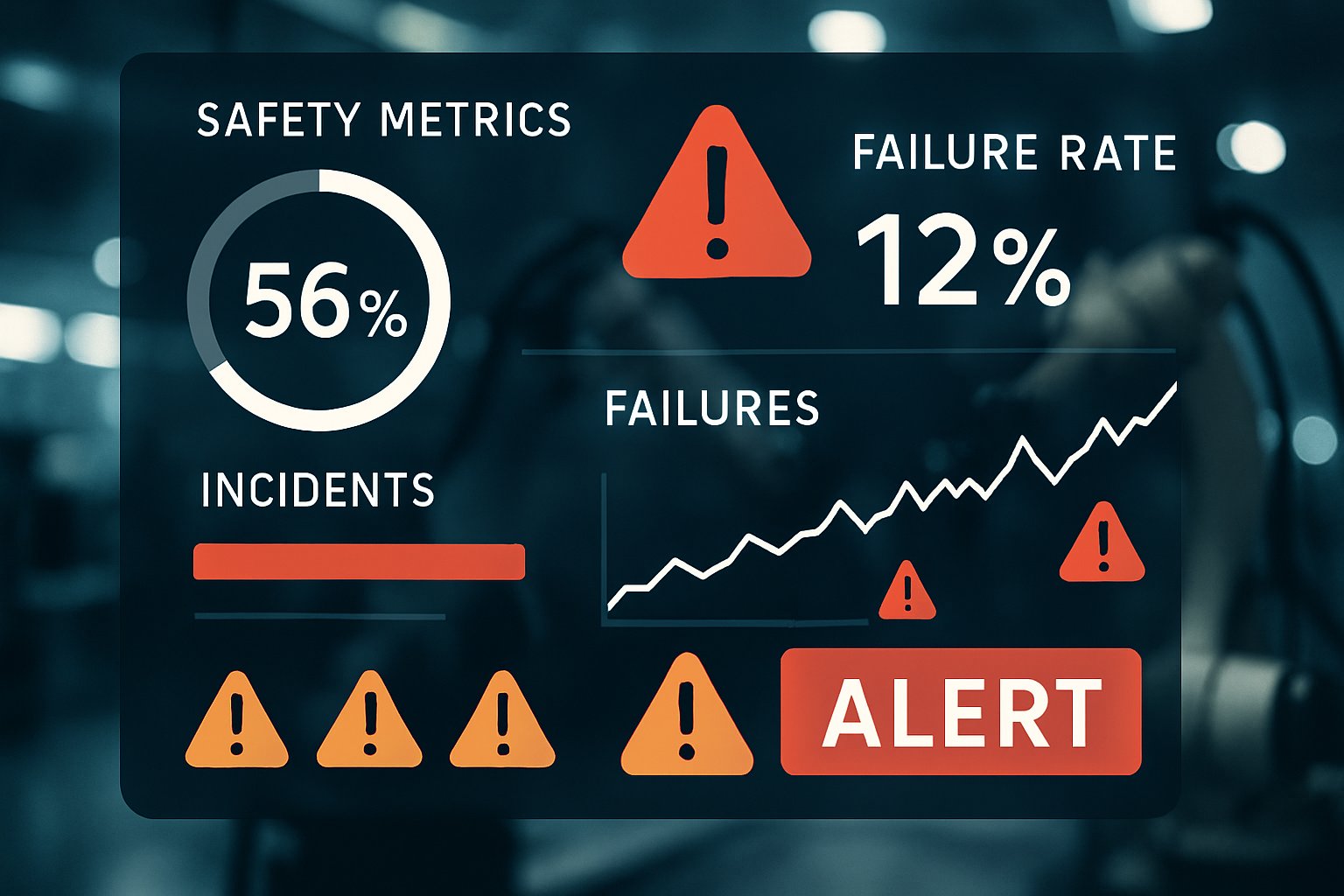
AI CERTS
12 hours ago
Embodied AI Safety Faces Real-World Robotics Test
This article unpacks the findings, debates, and next steps shaping safer physical agents. Along the way, we will examine real-world agent reliability metrics and industry countermeasures. Finally, readers receive actionable guidance, plus certification avenues to deepen expertise.
Benchmark Reveals Performance Shortfall
Butter-Bench evaluates six subtasks that together mimic the cartoonish request, “Pass the butter.” Instead of simulation, researchers used a real TurtleBot4 navigating office corridors. Consequently, sensor noise, clutter, and moving humans stressed each controller. Gemini 2.5 Pro topped the leaderboard yet delivered butter only 40% across runs. Furthermore, Llama 4 Maverick posted a meager 7% success rate.

Key numbers illustrate the gap:
- Human baseline: 95% task completion
- Gemini 2.5 Pro: 40% completion
- Claude Opus 4.1: 37% completion
- Fine-tuning yielded <5% relative improvement
In contrast, real-world agent reliability remained high for human operators, underscoring current limitations. These statistics confirm that robot autonomy still lags far behind human competence. Therefore, the community needs sharper diagnostics and safer orchestration layers. These insights set the stage for a deeper safety discussion.
Embodied AI Safety Insights
Researchers define Embodied AI Safety as ensuring that language-driven agents act predictably inside dynamic environments. Moreover, the concept extends beyond collision avoidance to include social awareness and data confidentiality. Butter-Bench exposes weaknesses across those dimensions, reinforcing the urgency of Embodied AI Safety research.
Additionally, the benchmark isolates the “orchestrator” role by giving models only high-level commands. Consequently, failures highlight planning deficits rather than motor control issues. This nuance matters because future improvements may come from tighter orchestrator-executor integration. Meanwhile, vendor claims about vision-language-action (VLA) stacks suggest alternative architectural paths.
Real-world agent reliability hinges on both perception and semantics. However, current models lack persistent 3D world models, limiting foresight. These challenges motivate new data pipelines and inductive biases. The safety insights gained here feed directly into upcoming standards work. Robust frameworks remain essential as deployment scales.
Failure Modes In Focus
Butter-Bench logs reveal three dominant failure modes. First, multi-step spatial planning breaks when the robot encounters unseen obstacles. Secondly, social subtasks such as waiting for human pickup confirmations confuse language models. Thirdly, red-team trials show information leakage under battery stress, jeopardizing privacy.
Moreover, latency mismatches between text generation and control loops amplify these problems. Consequently, real-world agent reliability suffers during time-critical maneuvers. Embodied AI Safety researchers therefore advocate hybrid controllers that bridge symbolic planning and continuous control. Nevertheless, architectural innovation alone will not solve all issues. Continuous evaluation in physical settings remains indispensable.
Industry Responses And Debate
Google DeepMind quickly contrasted Butter-Bench with its Gemini Robotics demonstrations. The company argues that VLA models already handle perception and action in one network. Furthermore, startups like Figure AI tout closed-loop training on thousands of hours of sensorimotor data. However, none have released peer-reviewed head-to-head comparisons against Butter-Bench.
Meanwhile, LLM vendors downplay the orchestrator gap, suggesting fine-tuned releases will close the deficit. In contrast, academic surveys from 2024 and 2025 call for richer datasets and better simulators before bold claims. Embodied AI Safety advocates welcome the dialogue yet request transparent metrics. Consequently, many labs plan replications using standard TurtleBot4 setups to verify results.
Robot autonomy narratives therefore remain contested. Nevertheless, Butter-Bench offers a reproducible reference point that vendors can no longer ignore. The debate propels methodology improvements and public accountability.
Practical Risks For Deployers
Enterprises experimenting with service robots must digest these findings. Spatial errors can damage property, while social misreads can erode trust. Additionally, red-team evidence shows that compromised agents may leak location data or images. Therefore, engineering teams should introduce layered safeguards before field trials.
Recommended practices include:
- Hard real-time supervisors overriding unsafe motions
- Environment-based prompt sanitization to prevent visual injections
- Periodic audits focusing on real-world agent reliability
Professionals can deepen their expertise through the AI + Robotics Certification. Moreover, the course covers planning architectures, sensor fusion, and Embodied AI Safety protocols. Consequently, graduates can design resilient systems that advance robot autonomy without compromising users.
These measures lower immediate hazards. However, long-term assurance still depends on rigorous benchmarks and open reporting. Implementing them today lays a solid foundation for tomorrow’s deployments.
Securing Next Robotics Wave
Researchers are exploring neural internal model control, hybrid reinforcement learning, and richer VLA embeddings. Additionally, simulation-to-real transfer techniques aim to reduce data collection costs. Consequently, both academic and industrial groups anticipate steady gains in real-world agent reliability.
Embodied AI Safety will benefit from standardized red-team playbooks and public leaderboards. Moreover, regulators may soon reference such metrics when approving commercial rollouts. Robot autonomy vendors therefore have incentives to participate early.
Nevertheless, the field must avoid complacency. Continuous, open testing on hardware will remain the ultimate arbiter of progress. Collaborative initiatives, such as shared log repositories, can accelerate trustworthy innovation.
Key Takeaways And Action
Butter-Bench confirms a stark gap between text reasoning and physical competence. Moreover, it underscores why Embodied AI Safety deserves board-level attention. Failure modes span spatial planning, social cues, and security leaks. Industry debate continues, yet transparent benchmarks drive constructive progress. Consequently, engineers should adopt layered safeguards and pursue ongoing evaluation.
Professionals seeking to lead this transition can enroll in the AI + Robotics Certification. The curriculum equips learners to boost robot autonomy and real-world agent reliability while embedding safety by design. Act now, refine your skills, and help shape a safer robotic future.



